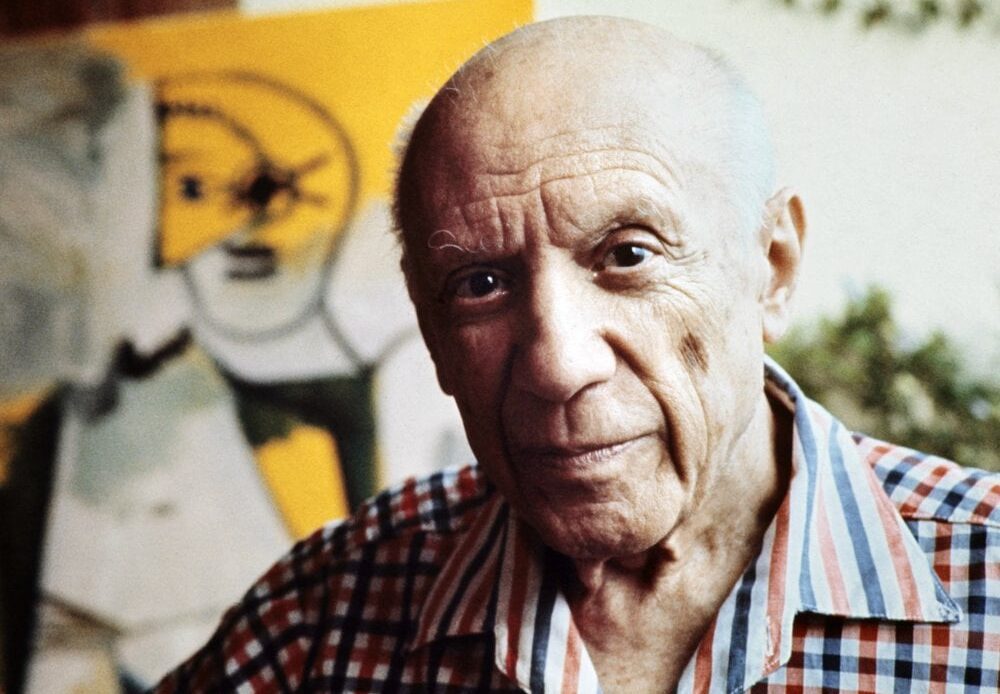Pablo Picasso in 1971
Ralph Gatti/AFP via Getty Images
In 1907, Spanish artist Pablo Picasso and French painter Georges Braque invented Cubism, a style of painting hallmarked by abstract geometric shapes. The two artists became quick friends and colleagues in Paris that year after Braque visited Picasso’s studio.
Picasso’s inspiration for the style came from the Louvre. That year, two Iberian sculpted heads disappeared from the Parisian art museum and ended up hidden in Picasso’s kitchen cabinets in Montmartre. They resurfaced again in the form of the first Cubist painting, Picasso’s Les Demoiselles d’Avignon, featuring women with elongated faces and large eyes resembling the statues.
The heist was orchestrated and carried out by Belgian thief Honoré-Joseph Géry Pieret, who then gave the statues to Picasso. It’s not known whether Picasso actually commissioned the theft, but some historians believe that to be the case. Picasso was close friends with poet Guillaume Apollinaire, and Pieret was Apollinaire’s secretary.
“One of the reasons [Picasso] wanted to steal and own the statue heads is that they were ancient Iberian statue heads, and he felt they were connected to his roots, to the roots of Spain,” says Noah Charney, art historian and author of The Thefts of the Mona Lisa, about the 1911 robbery of Leonardo da Vinci’s masterpiece that Picasso was also implicated in. “He wanted to integrate them into this new artistic vocabulary he was developing.”
Even though many of Picasso’s adult years were spent in France, he always had a spot in his heart for Spain. He was born in Málaga in 1881, left for Paris in 1904, and returned to his native country often—until dictator Francisco Franco seized power during the Spanish Civil War in the late 1930s.
“For many Spaniards, Picasso became an iconic figure, an embodiment of what artists can do to oppose war and take a stand in favor of democracy, showing that art can also be a tool in the fight for peace and human rights,” says Jordi Falgàs, an art historian in Catalonia.
Picasso died from fluid in the lungs on April 8, 1973, in Mougins, France. To honor the painter on the 50th anniversary of his death, a worldwide Picasso Celebration will run throughout this year, with exhibitions, rededications of public art, seminars and more….
Click Here to Read the Full Original Article at Travel | smithsonianmag.com…
